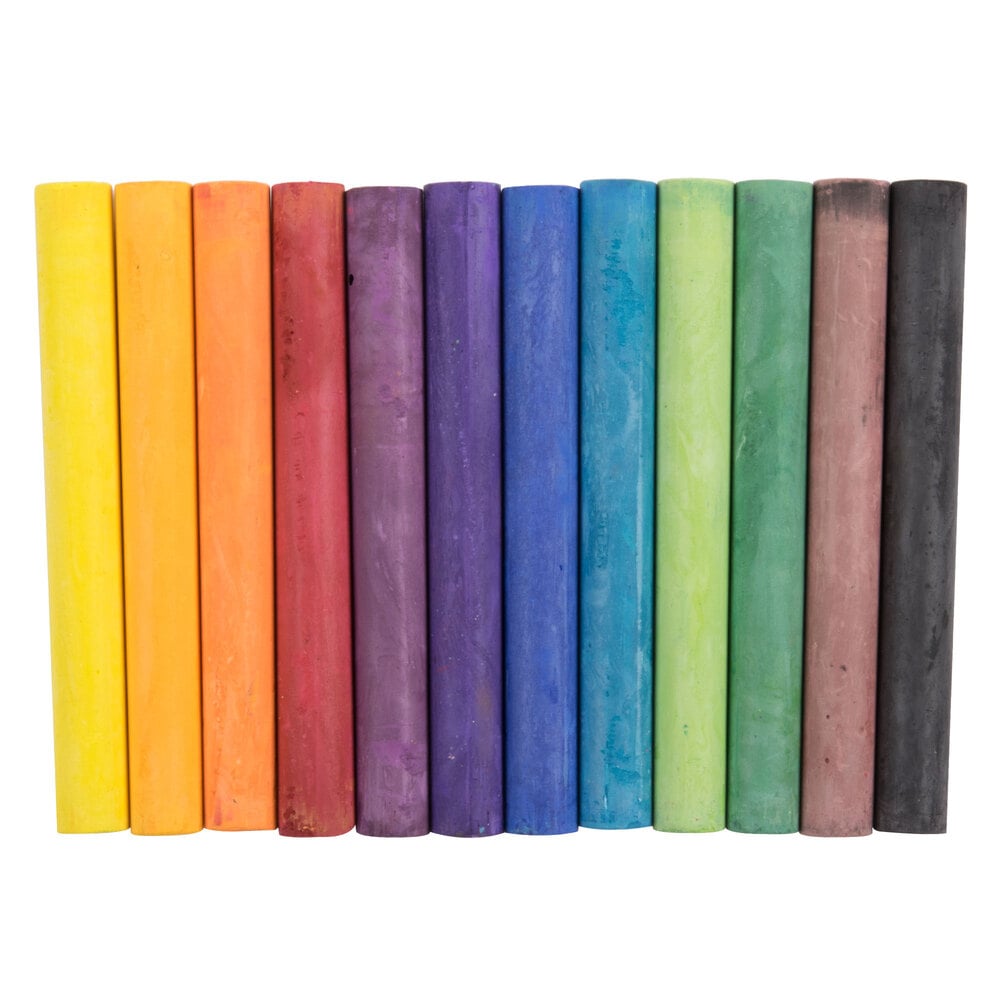

Others contain multiple pigments, which are separated using chromatography. Some dyes and inks only consist of a single pigment, so they will only leave one band of color. To best assess the properties of the pigments, the progress of the solvent should be marked, as well as the progress of each pigment or color. Find quality office, school, & crafts products to add to your Shopping List or order online for. Separation is achieved as the analytes (pigments) travel at different rates. Shop for Crayola Colored Chalk (12 pk) at Harris Teeter. The solvent dissolves the non-volatile sample to form the liquid phase of chromatography. per unit) Bucket, 4 1/2' x 3 1/4' with a 4 1/2' handle chalk, approx.

A must-have for kids’ art supplies, this set of colorful chalk even comes in a handy plastic bucket with handle. The chalk serves as the adsorbent or stationary phase of chromatography. Colored Chalk Assorted Colors, 16/Pack Chalk is perfect for arts, crafts, hobbies, home and school. Featuring 100 pieces of colored chalk, you won't worry about running out of chalk for a long, long time. Stain removal suggestions are provided as a service to consumers. With a clean, damp sponge, remove any remaining Soft Scrub. Remove the remaining chalk stain with a damp sponge and Soft Scrub. Brush and rinse as much of the chalk stain from the surface as possible with a sponge.
COLOREE CHALL HOW TO
However, since pigments really only travel along the outer surface of a piece of chalk, it's more an example of a type of thin-layer chromatography. How to remove Colored Chalk from painted walls. The pigment molecules are drawn through the paper via capillary action as the solvent moves. Larger particles have a harder time navigating "holes" in the paper, so they don't travel as far as smaller particles. tonaquatic / Getty ImagesĬhalk chromatography is similar to paper chromatography, where pigments travel through a sheet of paper based on particle size.
COLOREE CHALL FREE
If you are mainly interested in getting bands of pretty colors rather than separating individual pigments in the dye, then feel free to dot multiple colors, all in the same place. You can place a dot of color or stripe a band of color all the way around the chalk.

Apply your ink, dye or food coloring to a piece of chalk about 1 cm from the end of the chalk.


 0 kommentar(er)
0 kommentar(er)
